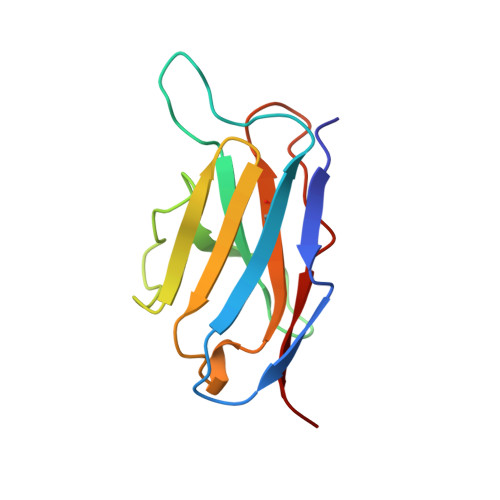Change in dimerization mode by removal of a single unsatisfied polar residue located at the interface.
Pokkuluri, P.R., Cai, X., Johnson, G., Stevens, F.J., Schiffer, M.(2000) Protein Sci 9: 1852-1855
- PubMed: 11045631
- DOI: https://doi.org/10.1110/ps.9.9.1852
- Primary Citation of Related Structures:
1QAC, 5LVE - PubMed Abstract:
The importance of unsatisfied hydrogen bonding potential on protein-protein interaction was studied. Two alternate modes of dimerization (conventional and flipped form) of an immunoglobulin light chain variable domain (V(L)) were previously identified. In the flipped form, interface residue Gln89 would have an unsatisfied hydrogen bonding potential. Removal of this Gln should render the flipped dimer as the more favorable quaternary form. High resolution crystallographic studies of the Q89A and Q89L mutants show, as we predicted, that these proteins indeed form flipped dimers with very similar interfaces. A small cavity is present in the Q89A mutant that is reflected in the approximately 100 times lower association constant than found for the Q89L mutant. The association constant of Q89A and Q89L proteins (4 x 10(6) M(-1) and >10(8) M(-1)) are 10- and 1,000-fold higher than that of the wild-type protein that forms conventional dimers clearly showing the energetic reasons for the flipped dimer formation.
Organizational Affiliation:
Argonne National Laboratory, Biosciences Division, Illinois 60439, USA.















